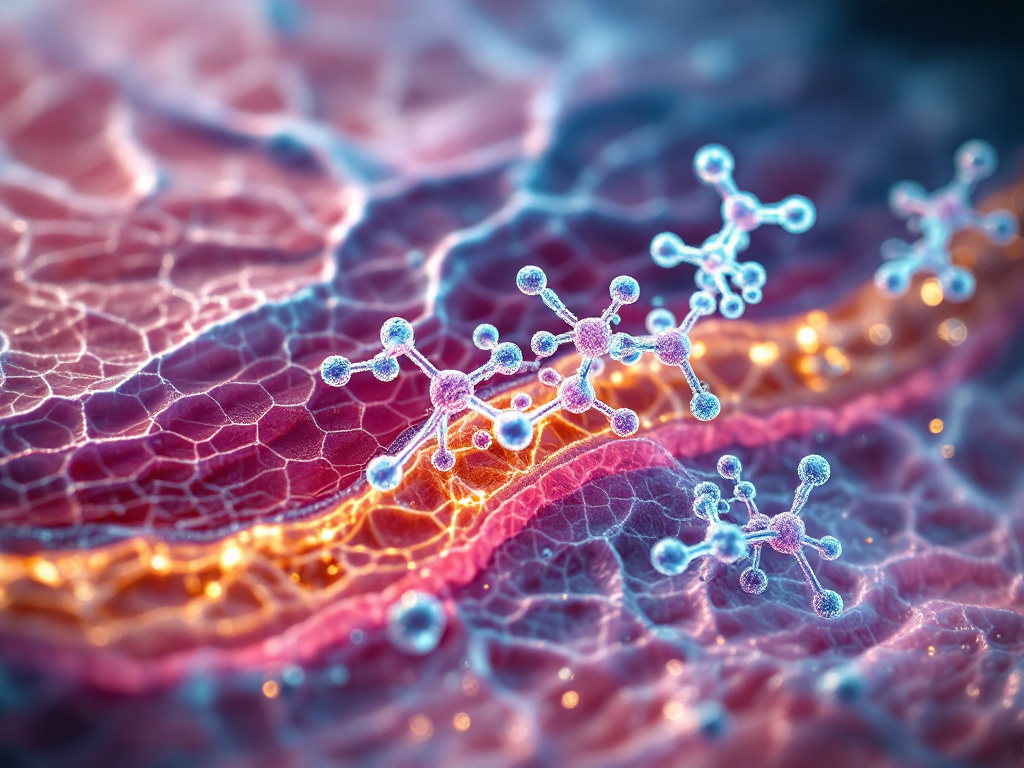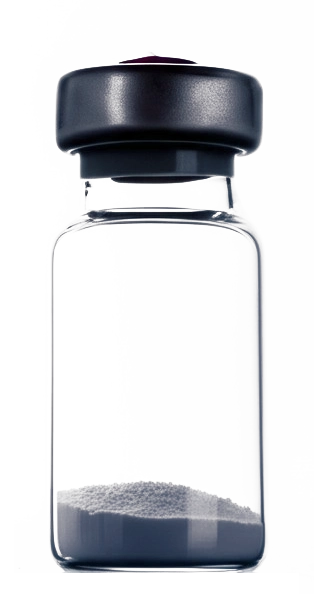
Anti-aging peptides are short chains of amino acids that act as building blocks for proteins like collagen, elastin, and keratin. These proteins are vital for maintaining skin structure, elasticity, and overall health. As we age, the production of these essential proteins naturally declines, leading to wrinkles, sagging, and other signs of aging. Anti-aging peptides work by signaling to the skin cells to produce more collagen and other proteins, effectively reversing some of the effects of aging.
When applied topically through skincare products, peptides penetrate the outer layer of the skin and communicate with cells to boost collagen production. Different peptides target specific skin concerns; some stimulate collagen synthesis, while others reduce inflammation or protect against UV damage. This targeted approach makes anti-aging peptides a powerful tool in modern skincare.
The effectiveness of anti-aging peptides depends on factors such as the type of peptide, its concentration in the product, and the formulation that allows for optimal penetration. Research indicates that consistent use of peptide-based products can lead to noticeable improvements in skin texture, firmness, and overall appearance. Understanding the science behind these peptides helps consumers make informed choices when selecting skincare products for wrinkle reduction and skin renewal.
Anti-aging peptides, retinoids, and vitamin C are all potent ingredients in the fight against aging, but they function differently and offer unique benefits. Retinoids, derivatives of vitamin A, are known for their ability to increase cell turnover, reduce wrinkles, and improve skin texture. Vitamin C is a powerful antioxidant that protects the skin from free radical damage, brightens the complexion, and stimulates collagen production. Anti-aging peptides, on the other hand, primarily work by signaling skin cells to produce more collagen and other structural proteins.
One key difference is the level of irritation. Retinoids can often cause dryness, redness, and peeling, especially when first introduced into a skincare routine. Vitamin C, while generally well-tolerated, can sometimes cause mild irritation in sensitive skin. Anti-aging peptides are generally considered gentler and less likely to cause irritation, making them a suitable option for individuals with sensitive skin or those who cannot tolerate retinoids or high concentrations of vitamin C.
Each ingredient addresses different aspects of aging skin. Retinoids are excellent for cell turnover and texture improvement, vitamin C for antioxidant protection and brightening, and anti-aging peptides for collagen stimulation and dermal repair. Many skincare routines incorporate a combination of these ingredients to provide comprehensive anti-aging benefits. For instance, using a vitamin C serum in the morning for antioxidant protection, a peptide-based product in the evening for collagen stimulation, and a retinoid a few times a week can create a well-rounded skincare regimen.



Several types of anti-aging peptides have demonstrated significant effectiveness in wrinkle reduction. Matrixyl, for example, is a well-known peptide that stimulates collagen synthesis and helps repair damaged skin. Copper peptides are another popular choice, known for promoting collagen and elastin production, as well as wound healing. Argireline, often referred to as a natural Botox, targets fine line treatment by inhibiting muscle movement, thereby reducing the appearance of wrinkles.
Each of these peptides works through different mechanisms. Matrixyl peptides signal fibroblasts, the cells responsible for collagen production, to increase their activity. Copper peptides deliver copper, an essential mineral for collagen synthesis, directly to the skin. Argireline blocks nerve signals to facial muscles, reducing muscle contractions that lead to wrinkles. The choice of peptide depends on the specific skin concern and desired outcome.
Products containing a combination of these anti-aging peptides can offer comprehensive wrinkle reduction benefits. For example, a serum containing Matrixyl and copper peptides can boost collagen production and improve skin elasticity, while adding Argireline can target expression lines and prevent new wrinkles from forming. Understanding the specific actions of different peptides allows consumers to select products that best address their individual skin needs for optimal results.
The timeline for noticeable wrinkle reduction with anti-aging peptides varies depending on several factors, including the specific peptide used, its concentration in the product, the frequency of application, and individual skin characteristics. Generally, consistent use of peptide-based products for at least 4 to 12 weeks is required to see visible improvements.
In the initial weeks of use, some individuals may notice subtle improvements in skin texture and hydration. Over time, as collagen production increases, fine lines and wrinkles begin to diminish. Deeper wrinkles may take longer to show significant improvement, often requiring several months of consistent use. It is important to maintain a consistent skincare routine and follow the product instructions for optimal results.
Patience and consistency are key when using anti-aging peptides for wrinkle reduction. While some individuals may experience faster results, others may require more time to see noticeable changes. Documenting your progress with before-and-after photos can help track improvements and stay motivated. Combining peptide-based products with other anti-aging strategies, such as sun protection and a healthy lifestyle, can further enhance wrinkle reduction and promote youthful skin.



Incorporating anti-aging peptides into a daily skincare routine can be straightforward, but it requires careful consideration of product selection and application techniques. Start by choosing a high-quality peptide-based serum or cream that is formulated to address your specific skin concerns, such as wrinkle reduction, skin tightening, or collagen stimulation. Look for products that contain a blend of different peptides for comprehensive anti-aging benefits.
Apply the peptide product after cleansing and toning, but before heavier creams or oils. This allows the peptides to penetrate the skin effectively. Gently massage the product into the skin using upward, circular motions. For best results, use the peptide product both morning and night. In the morning, follow with a broad-spectrum sunscreen to protect the skin from UV damage. In the evening, you can layer the peptide product with other anti-aging treatments, such as retinoids or antioxidants, depending on your skins tolerance.
Consistency is crucial for achieving long-term youthful skin. Make anti-aging peptides a regular part of your daily skincare routine and be patient as you wait for results. It may take several weeks or months to see noticeable improvements in skin texture, firmness, and wrinkle reduction. Pairing peptide-based products with a healthy lifestyle, including a balanced diet, regular exercise, and adequate sleep, can further enhance their effectiveness and promote overall skin health.
Anti-aging peptides are generally considered safe for most skin types, but like any skincare ingredient, there is a potential for side effects or interactions. Some individuals may experience mild irritation, redness, or itching, especially when first introducing peptide-based products into their routine. To minimize the risk of irritation, start by using the product once a day and gradually increase frequency as tolerated.
It is also important to be aware of potential interactions with other skincare ingredients. While peptides can generally be used with most products, combining them with highly acidic ingredients, such as AHAs (alpha hydroxy acids) or BHAs (beta hydroxy acids), may reduce their effectiveness. The low pH of these acids can denature peptides, rendering them less active. If you use AHAs or BHAs, consider applying them at a different time of day than your peptide product, or alternating their use on different days.
Before incorporating anti-aging peptides into your skincare routine, perform a patch test on a small area of skin to check for any adverse reactions. If you experience persistent irritation or other concerning symptoms, discontinue use and consult with a dermatologist. Being mindful of potential side effects and interactions can help you safely and effectively incorporate anti-aging peptides into your skincare regimen for long-term youthful skin.
Here are some quick answers to the questions covered in this article:

